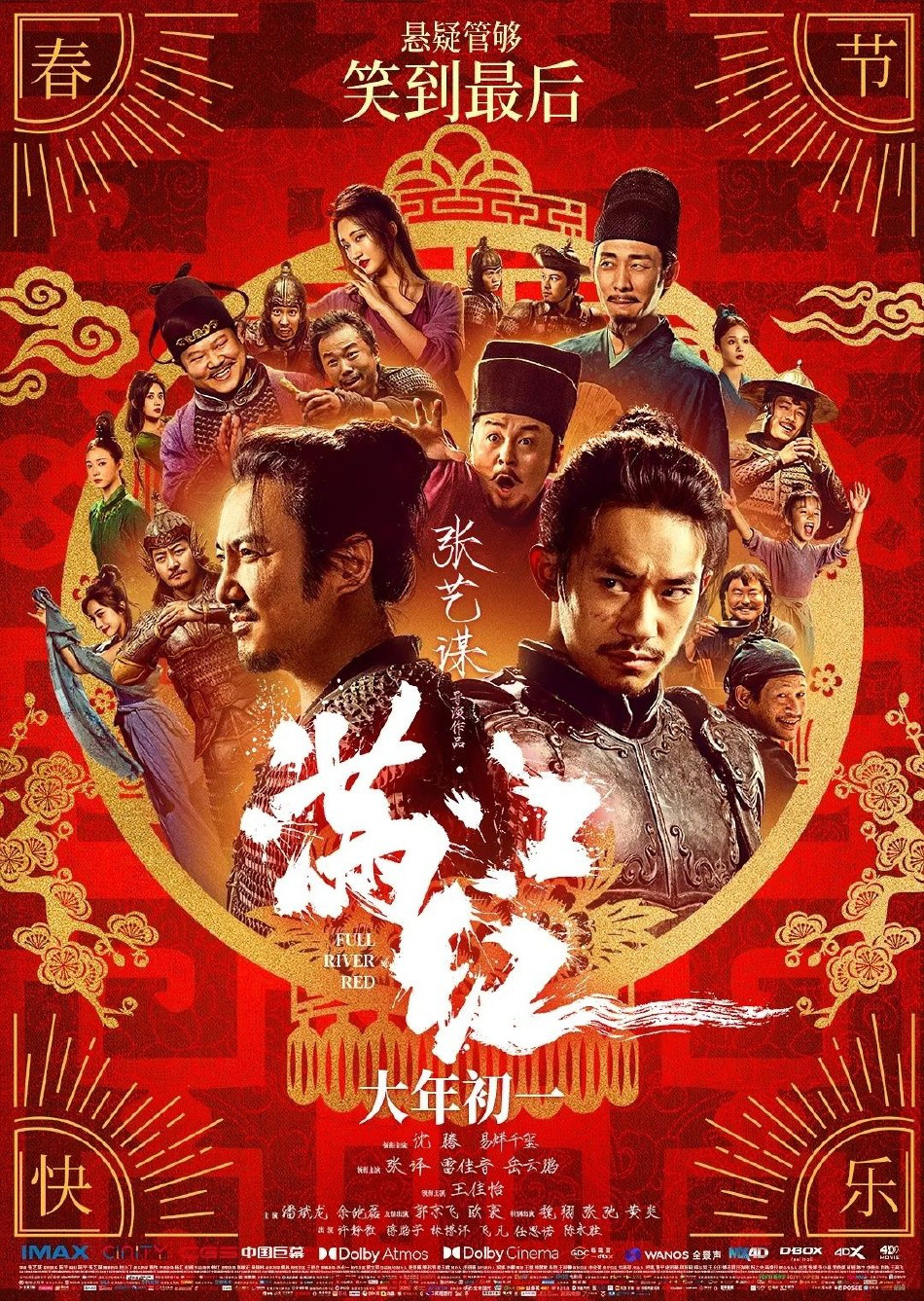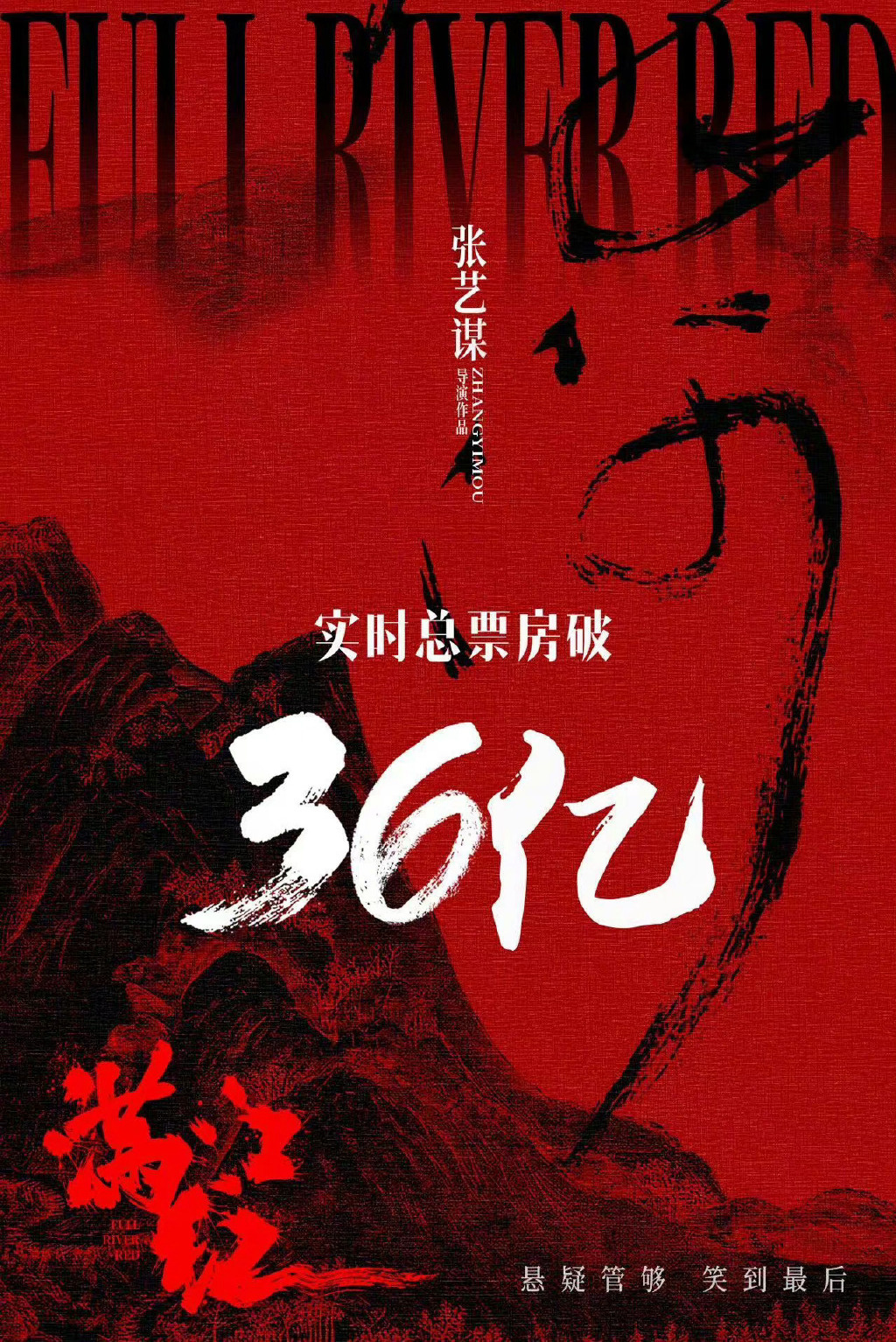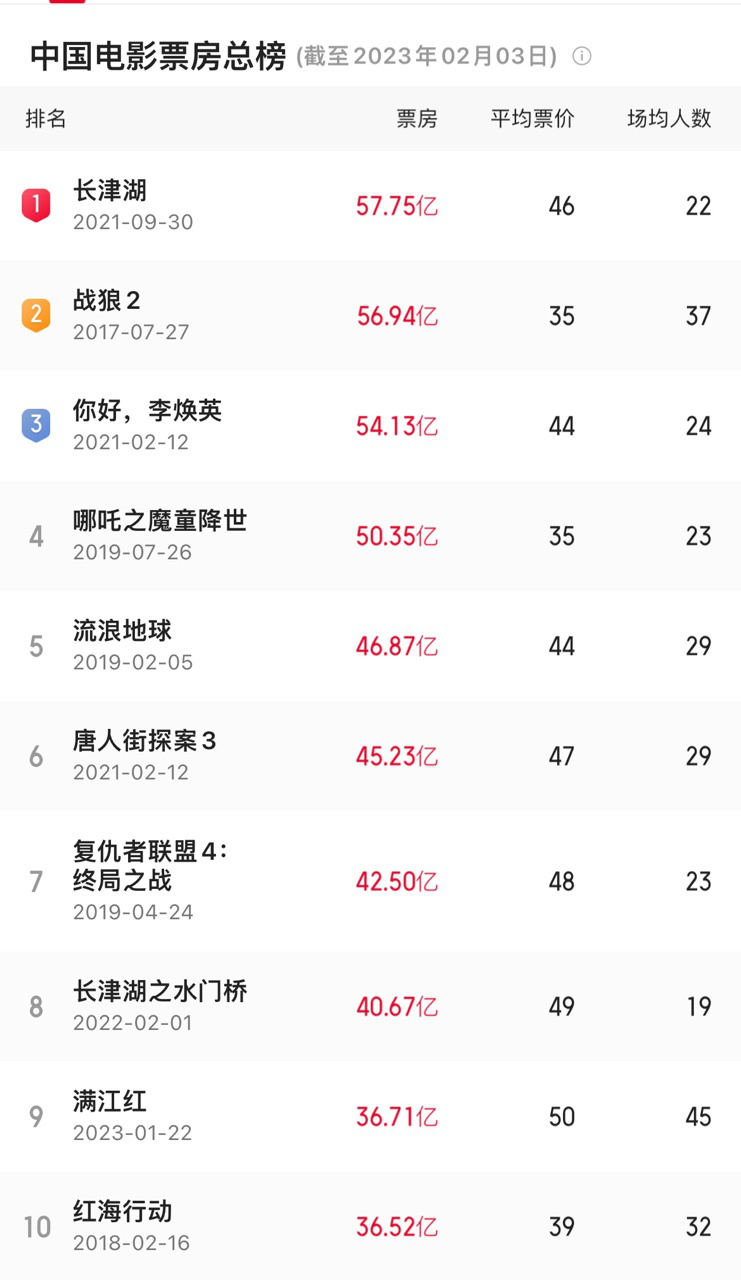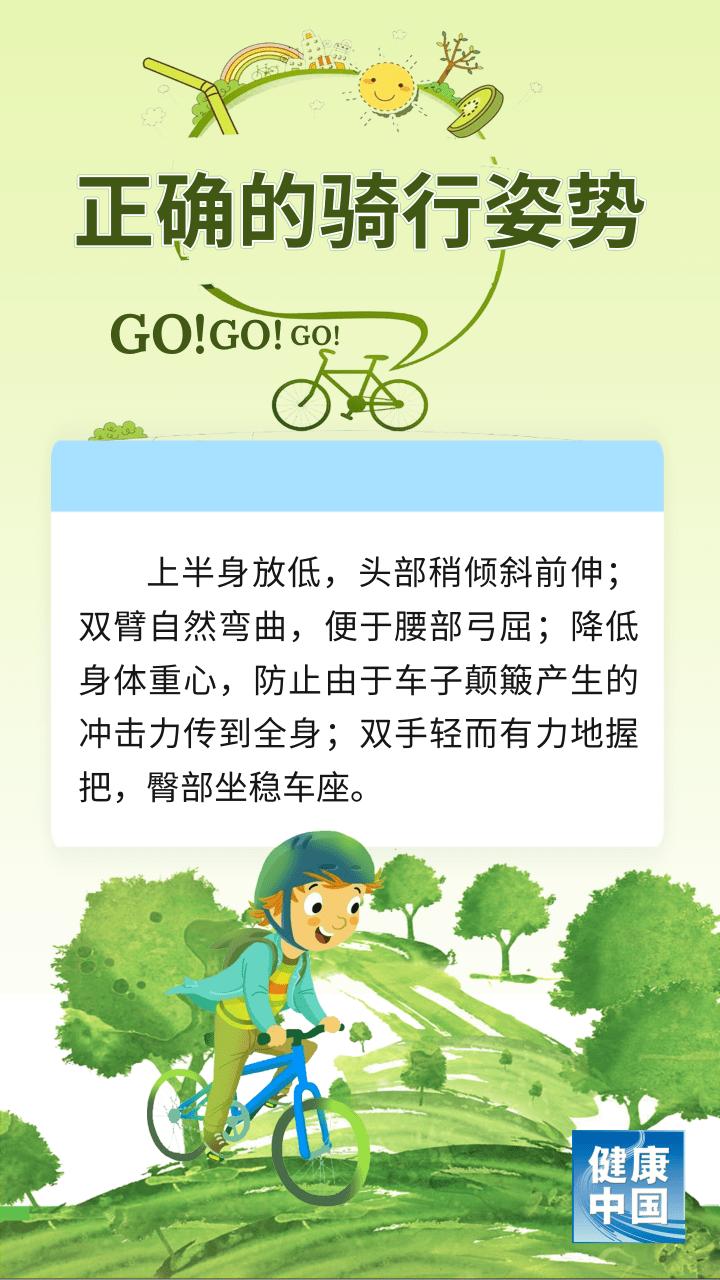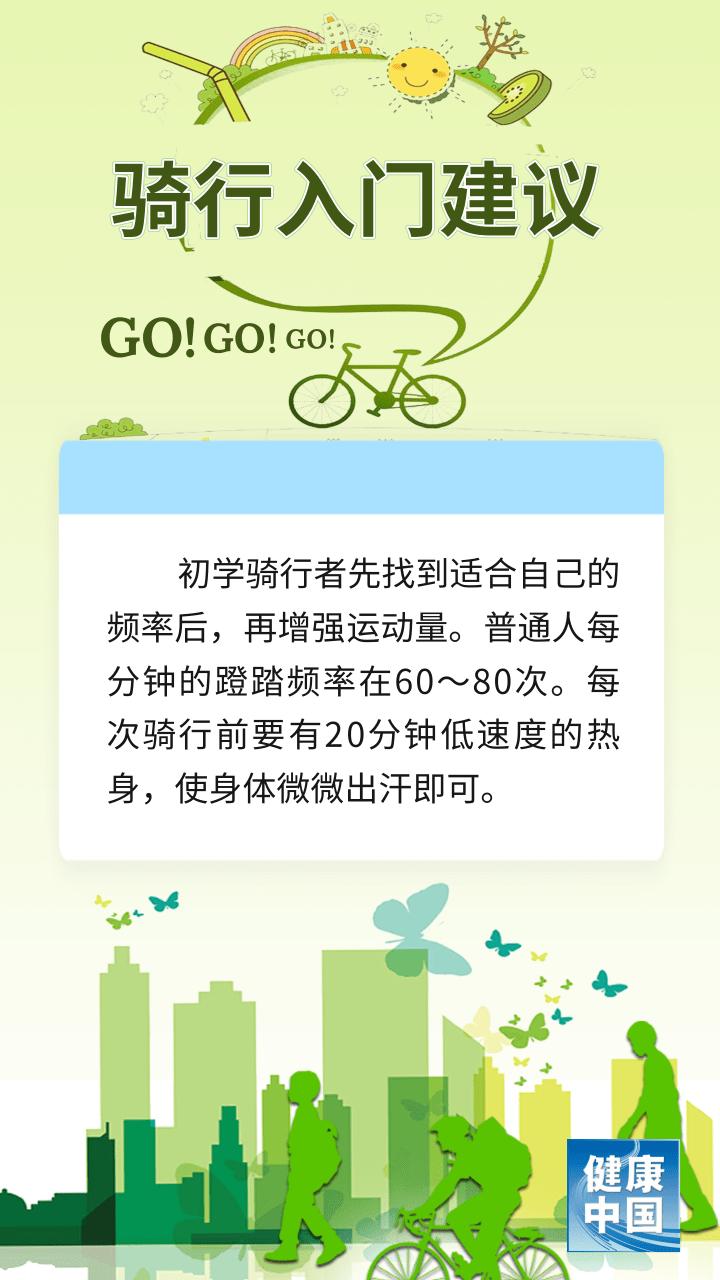"New" cars gather at Haikou International Auto Show and Haikou New Energy Auto Show.
On January 5th, 2024 (the 6th) Haikou International New Energy and Intelligent Networked Automobile Exhibition was grandly opened as scheduled. This year’s auto show was divided into four exhibition halls with a total exhibition area of 60,000 square meters, attracting nearly 90 international mainstream new energy brands to participate in the exhibition, with 500 models on display, which can be described as bursting with popularity and unprecedented pomp.
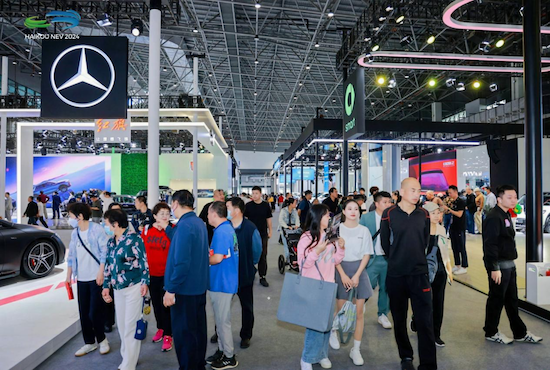
Saic mg
As a world-famous automobile brand, the development history of MG is the most important part in the process of automobile industry in Britain and even the world. The Encyclopedia Britannica uses MG to define sports cars. Under the wave of global scientific and technological revolution, relying on the advantages of large-scale and systematization of SAIC’s entire industrial chain, MG has accelerated the transformation of electrification, laid out two major tracks of "high value" and "globalization", and established its position as a world-renowned automobile brand.

At this auto show, MG’s highly respected Cyberster was unveiled. The car was officially launched on November 17, and three models were launched. The official guide price was 319,800-359,800 yuan. The front face design of this red sports car is very unique, the front line is pressed very low, and the side design is full of strength, thanks to its two-stage shoulder line design and the "waist-closing" line on the back side of the door panel, and the slightly upturned duck tail is very elegant. The soft-top convertible is composed of three layers of special fabric, which can be opened and closed for 8 seconds in the parking state. In addition, MG also built an exaggerated scissor door for it, with an electric opening and closing angle of 30-76 degrees. Cyberster’s battery capacity is 64kWh and 77kWh respectively, corresponding to cruising range of 501km, 520km and 580km respectively, and the shortest acceleration time can reach 3.2 seconds. It adopts front double wishbone+rear five-bar independent suspension and is equipped with Brembo four-piston brake calipers.
Saic roewe
Roewe has brought six different new models, and the new Roewe D7 EV just listed at the end of 2023 has become the focus of everyone’s attention.

The official guide price of Roewe D7 EV is 149,800-176,800 yuan. The new car is based on the exclusive platform of SAIC Xingyun pure electricity, positioning the pure electric medium-sized car, and also adopting the brand-new design language of Roewe brand. The overall shape of Roewe D7 EV is generous, the middle net is designed in a closed way, and the shape of the light strip is in a blade style, which increases the exquisiteness of the front face, and the side of the car body presents a high smoothness. The existence of the hidden door handle further highlights the attributes of the tram, and the interior adopts the popular minimalist shape. In terms of power, Roewe D7 EV adopts VGA six-in-one motor with a maximum power of 145kW/155kW. In addition, Roewe D7 EV is also equipped with a brand-new Rubik’s Cube battery, which provides two cruising ranges of 510km and 610km under CLTC working conditions.
Faw Toyota
2023 is a milestone in the electrification of FAW Toyota, and its sales of pure electric vehicles increased by 17 times year-on-year. Among them, bZ pure electric series sold a total of 33,094 vehicles, and bZ3, the "Toyota’s first pure electric car" listed in April, sold 25,927 vehicles, making it one of the outstanding joint venture pure electric cars. There is no doubt that this auto show, pure electric bZ3 attention.
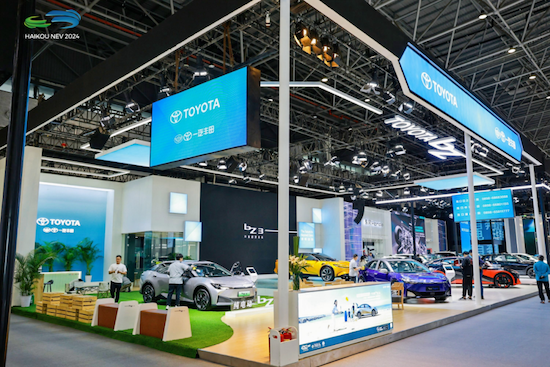
The original design that is modern enough gives bZ3 an avant-garde appearance. At the same time, bZ3 also has a wind resistance as low as 0.218. Based on this, the power consumption of bZ3 is as low as 11 degrees per 100 kilometers. In addition, bZ3 has also achieved a longer cruising range. Combined with ultra-low rolling resistance tires, the resistance of the whole vehicle is reduced by 22%, so that the vehicle has a cruising range of 616 kilometers under CLTC working conditions. Today, with the rapid development of intelligence, bZ3 adopts a 12.8-inch floating multimedia navigation system and uses a vertical design, which will be more in line with the user’s habit of using vertical screen mobile phones. The growing AI smart partner "Xiao Fei" can also support Mandarin, Cantonese and Sichuan dialect recognition, and support wakeup-free and 120-second continuous command and natural voice input in various scenarios, which is more convenient to use.
Dongfeng Honda
Dongfeng Honda also participated in almost all the exhibitions this time, with a total of as many as 9 heavy models on display. Among them, INSPIRE e:PHEV, CRV e:PHEV, E: NS1 and other models are particularly eye-catching.

The most worth mentioning is E: NS1. E:NS1 is driven by the front axle motor and the ternary lithium battery pack provided by Contemporary Amperex Technology Co., Limited, and the pure electric cruising range corresponding to CLTC test conditions is 420km and 510km respectively. In addition, e:NS1 is also equipped with Honda CONNECT 3.0 intelligent guidance interconnection system, which provides AI voice assistant, car home interconnection, OTA upgrade and other functions. The new car will also provide streaming media rearview mirror and DMC driver status awareness, which is a relatively rare hard-core configuration in its kind. At the 2021 Honda China electrification strategy conference, Honda (China) officially released a brand new pure electric vehicle brand — — E:N, and this e:NS1 is the first mass-produced model in this series, which represents the brand’s latest understanding of future travel modes and user demands.
smart
Since its birth, smart has always led the innovative practice of urban travel, embraced the development and transformation of electrification and intelligence in the automobile industry, and is the first automobile brand in the industry to be fully transformed into pure electricity. At this auto show, smart brought a total of two electrified models #1 and #3.

The orange-colored # 3 stands out from the crowd. # 3 launched a total of four models, including Pro+, Pulse four-wheel drive version, Premium and BRABUS performance version, among which BRABUS performance version will be sold in limited edition in 2023. Smart#3 adopts the design style of "new luxury sports aesthetics" and the posture of low-lying coupe SUV, which has both surging muscle tension and elegance and sexiness. The new smart#3 is equipped with a dual-motor intelligent four-wheel drive system. In the "ejection mode", the BRABUS performance version only takes 3.6 seconds to accelerate. In the professional test site, the test score of the new smart Elk #3 reached 82.7km/h, and its smart Pilot Assist driving system can realize 23 intelligent assisted driving functions (including L2+ level).
Lincoln
The new trend represented by electrification and intelligence is changing consumers’ definition of luxury. As a traditional luxury brand, Lincoln is also facing challenges. On the Lincoln booth, the new Lincoln Navigator hybrid version became the "most beautiful boy". The new Lincoln Navigator hybrid version locates the large-scale American luxury SUV in the whole scene, and the official price range is 368,800-468,800 yuan, claiming to build a "super-long-life luxury car in history".

The brand-new Navigator hybrid version has an atmospheric appearance and the shape of air guides on both sides below the elegant light group, highlighting the identity of new energy. With the embracing cockpit design, the 23.6-inch embracing ultra-high-definition screen +11.1-inch central control screen fills up the sense of luxury technology, and integrates the SYNC+3.0 intelligent interconnection system. Thanks to the blessing of FNV3 intelligent interconnection network architecture platform and the help of Qualcomm Snapdragon 8155 chip example, it brings smooth operation. It is equipped with a 2.0T turbocharged engine+motor. The maximum power of the engine is 207kW and the maximum torque is 407 N m. The permanent magnet synchronous motor is used. The total power of the motor is 140kW, the total torque of the motor is 320N·m, the WLTC has a battery life of 1,129 kilometers and the fuel consumption is 6.64 liters per 100 kilometers.
BMW
At the BMW booth, pure electric BMW i7 and innovative pure electric BMW i5 are highly concerned. These two models are also BMW’s masterpieces in the field of electrification.

BMW i7 is the 5th pure electric product brought by BMW Group in China market, and the first pure electric luxury flagship car of BMW in the world. The fifth-generation BMW eDrive electric drive system is applied to the BMW i7, with a battery height of 110 mm and a net capacity of 101.7 kWh. Take i7 xDrive60L as an example, the cruising range under CLTC standard is 650 kilometers. The model is equipped with an upgraded magic carpet intelligent air suspension system, in which the active comfort and anti-tilting function is first applied to BMW models. The innovative pure electric BMW i5 is expected to be officially launched at the end of January. The appearance of the new car continues BMW’s elegant temperament, adopts the popular screen design, and reveals some east wind charm in details. According to previous news, the domestic long-axis i5 will launch four models, namely, i5 eDrive35L luxury suit, i5 eDrive35L M sports suit, i5 eDrive35L exclusive luxury suit and i5 eDrive35L exclusive M sports suit. The new car will be equipped with a rear single motor with a maximum power of 340 HP, and the CLTC will last for 567 kilometers.
Dongfeng Nissan
At this auto show, Dongfeng Nissan attended with all its new energy vehicles, bringing a total of 12 new cars. Among them, Qichen VX6 and Ai Ruiya ARIYA occupy C position.
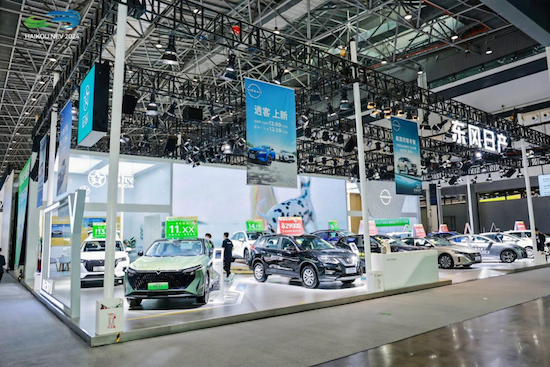
As a new car that went on the market at the end of 2023, Qichen VX6 positioned itself as a "home pure electric SUV" and launched three models, with the price range of 141,900-159,900 yuan. The new car is based on the Qichen Ve Concept concept car and is positioned as a "home pure electric SUV". In appearance, the closed grille on the front face of the new car is highly recognizable with penetrating light strips. In terms of power, the car is built on the original pure electric platform under the Dongfeng quantum architecture, equipped with an output motor with a maximum power of 160 kW, and the pure electric cruising range under CLTC conditions is 520km. If Qichen VX6 is aimed at the home market, then ARIYA’s positioning is even higher. This model was introduced to the market earlier, and the market guidance price is 272,800-342,800 yuan. The car was born in the cloud image intelligent pure electric platform developed by Renault-Nissan-Mitsubishi alliance, and its value lies in the full link self-developed three-electricity technology.
For traditional car companies, it is more important to understand the development trend of the industry than to update the car-making technology, and it is more important to tap their unique competitive advantages than to introduce advanced models. Under the background of the accelerated arrival of electrification and intelligence, Nissan released the NISSAN NEXT enterprise transformation plan in May 2020. This plan is to put the company back on the right track of development, and to rebuild a complete system of career reform plan for the next 10 years of development. Among them, NISSAN NEXT’s first global strategic model, ARIYA, has become the key to the electrification era of Dongfeng Nissan.
Haval, Great Wall Gun
At this auto show, all brands of Great Wall came, and Haval, Great Wall Cannon, Tank and WEY all attended, bringing a total of 20 new models.

At Haval’s booth, two new cars, Haval Raptor PHEV and Haval Xiaolong MAX PHEV, attracted wide attention. Among them, as the leader of new energy off-road SUV, Haval Raptors popularized the charm of off-road SUV to the mass market with its super strength and price within 200,000 yuan. The new car has two battery versions of 27.54kWh- Ferrous lithium phosphate and 19.09kWh- Ferrous lithium phosphate to choose from. It adopts the hard-core design concept and is equipped with "1.5THi4 rear axle differential lock", which combines off-road with new energy, which not only meets the users’ demand for green travel, but also enjoys the fun brought by off-road.
The Great Wall Gun brought star models such as PHEV. PHEV of Shanhai Gun inherits the Chinese aesthetic design concept of Shanhai Gun Passenger Edition, giving people a powerful visual impression. In terms of motor, the vertical 9-9HAT transmission is integrated with P2 motor, with a maximum power of 120kW and a torque of 400Nm, with an efficiency of over 96%. The total battery capacity is 37kWh, which can meet the requirements of pure battery life of 110km and comprehensive battery life of 900km, and its comprehensive strength is good.
Wei brand, tank
In the tank booth, star models such as tank 400 Hi4-T caught the audience’s eye.

The tank 400 Hi4-T was launched in September 2023, with 2.0T+9HAT gold power combination, 120kW high-power P2 motor and oil-electric dual drive, so that the comprehensive power of the tank 400 Hi4-T system is as high as 300kW, the comprehensive torque is 750N·m, and the zero acceleration takes only 6.8s s. The 37.1kW·h high-energy Dayu battery has a pure battery life of over 105km under WLTC condition, and it only takes 24 minutes to charge from 30% to 80%. Outdoor optional packages including front axle electronically controlled differential lock, AT tire, traction qualification, etc. can also be selected to meet the user’s full-scene off-road needs.
WEY brought a number of new cars such as Alpine MPV. The design of the front face of the mountain MPV is domineering, creating a strong sense of momentum, and the use of a large number of chrome-plated materials enhances the luxury of the vehicle itself. The overall design of the interior is relatively simple, using a 27-inch ultra-wide screen, supporting voice control, online navigation and other functions to meet various daily use scenarios.

FAW Hongqi
Hongqi released its sales performance in 2023. According to the data, in 2023, the retail sales of new energy in Hongqi exceeded 85,000 vehicles, up 135% year-on-year, and the penetration rate of new energy sales was 23%, ranking first among traditional luxury brands. Hongqi E-QM5 and Hongqi E-HS9 contributed a lot, with a total sales volume of 85,000 units, up 135% year-on-year, accounting for 23% of the total sales volume of Hongqi brand in 2023. At this auto show, Hongqi E-HS9 was also highlighted.

When it was first listed, the official guide price of Hongqi E-HS9 was 509,800-729,800 yuan, which made Hongqi E-HS9 one of the most expensive domestic pure electric SUVs, and also meant that Hongqi E-HS9 began to lead the Hongqi brand to launch an impact on the high-end pure electric field. Red flag E-HS9 "flagship" is full of color. Not only does the size exceed the Tesla Model X, but the momentum of the whole vehicle is not much better than that of Cullinan. The listing of Hongqi E-HS9 is of great strategic significance for Hongqi brand in terms of technological breakthrough, brand development and new energy market expansion. According to the "531" plan of Hongqi brand, by 2028, the planned total sales volume of Hongqi brand will exceed 1 million vehicles, of which the sales volume of new energy vehicles will exceed 700,000 vehicles. As a flagship product, Hongqi E-HS9 will play an important role.
Mercedes-Benz
Facing the goal of "double carbon", the electrification process of major automobile enterprises has been accelerated in an all-round way, and Mercedes-Benz has also responded positively, bringing seven models of products, including EQE 350 Progressive, Mercedes-Maybach S580 e and EQB 350 4MATIC, among which EQB 350 4Matic has attracted much attention.

The new EQB front grille adopts the "Night Star Wing" closed front grille of Mercedes-Benz pure electric EQ family, and the headlights and taillights are decorated with LED strip, adding a sense of technology. EQB is equipped with dual screen and MBUX human-computer interaction system, which provides a variety of intelligent configurations, such as 64-color atmosphere light, head-up display, Berlin sound, customized navigation in Gaode, etc. At the same time, it also adds color matching of Shuiyue silver car paint, giving users more choices. EQB 350 4MATIC is driven by front and rear dual motors, with a maximum power of 292 HP, a peak torque of 520 Nm, a battery capacity of 73.5 kWh, and a cruising range of 512 km under CLTC.
Volvo
In 2023, Volvo’s new energy vehicles blossomed in many aspects in the global market, all of which maintained a year-on-year growth trend. Among them, the European market took the lead and sold a total of 154,000 vehicles; The United States and other markets have also maintained more than 30,000 vehicles. In the China market, Volvo has also invested heavily. At this auto show, Volvo brought S90, XC90 and other popular new energy vehicles, providing fans with a wealth of car choices.

As a Nordic luxury flagship car, the newly upgraded version 2.0 ergonomic luxury seat of the 2023 Volvo S90 was jointly built by orthopedic surgeons and Volvo engineers. The seat design fits the back curve, which can give the occupant zui good coverage and support. And the seat can be adapted to 150cm— 200cm with different heights, meeting 99% of the passenger’s body shape. At the same time, the seat also adopts a new headrest shape and better leg support, which lengthens the cushion by 37-mdash; 40mm, increased by 10mm, reduced the height of backrest, increased the height of lumbar support, and brought first-class comfortable riding experience. In addition, the 2023 Volvo S90 has also upgraded a very humanized detail, that is, the rear row has introduced a 15W wireless charging device and the rear row has dual Type-C interfaces, which can make smart devices fully charged at any time and place, so that business elites can calmly handle work matters, and it is simply not too intimate.
Saic Audi
SAIC Audi’s first pure electric medium and large SUV based on MEB platform & mdash; — Audi Q5 e-tron made a grand appearance at this auto show. At first glance, the appearance of the Audi Q5 etron is very recognizable, with a fierce front posture. The large-size silver armor mesh model reveals a majestic atmosphere, and the eyes on both sides are sharp and imposing. The triangular diversion grooves are connected by decorative strips, which has a visual folding effect. The front lip adopts a hollow design, which is exquisite and ensures the wind resistance coefficient.

Thanks to the design foundation of the pure electric platform MEB, the Audi Q5etron has a wheelbase of 2965mm, providing a six-seat version of 2+2+2 and a seven-seat version of 2+3+2, which is convenient for different consumers to choose. The central area of the six-seat version retains the aisle, and at the same time, it adopts the design of hidden handrails, which is convenient for the passengers in the third row to get in and out, greatly reducing the difficulty of getting on and off. Audi Q5etron offers two different pure electric endurance versions, namely 550km and 560km. At the same time, it is equipped with MobileyeEyeQ4 driver assistance system chip, 3 millimeter-wave radars, 12 ultrasonic radars, 4 panoramic cameras and 1 multi-function camera, which can realize L2+ level driver assistance.
Jaguar Land Rover
Jaguar Land Rover has brought two new energy vehicles this time, namely, the new Discovery Sport P300e plug-in hybrid version and the new Land Rover evoque L P300e plug-in hybrid version.

The brand-new Discovery Sport P300e plug-in electric hybrid version inherits the DNA design elements of Discovery Family, and incorporates the Tiger Claw ornaments on the front face to visually show the sense of movement that is ready to go. Equipped with luxurious Windsor perforated leather seats, the front seats are electrically adjustable in 14 directions, and equipped with a 12.3-inch full LCD virtual instrument panel, creating a refined and luxurious interior cabin atmosphere. The comprehensive maximum power is 309 horsepower, the maximum torque is 540 Nm, and the cruising range of pure electric mode WLTC is 53 kilometers.
The new Land Rover evoque L P300e plug-in hybrid vehicle inherits the neo-modernist design concept and shows its distinctive personality. Front seat 14-way electric adjustment (including 4-way electric lumbar support) with heating and ventilation, rear seat heating with backrest angle electric adjustment, and rear flying wing headrest with soft pillow and other functions, bringing more comfortable driving experience. Equipped with Terrain Response® second-generation intelligent all-terrain feedback adaptive system and all-terrain process control system, it can easily cope with various extreme weather or terrain changes.
Faw Audi
From 1988 to 2023, from fuel vehicles to new energy vehicles, from Audi 100 to the first product Q6 e-tron prototype of PPE platform appeared … … After entering China for 35 years, FAW-Audi has witnessed the rise and growth of China’s automobile industry. Now, facing the surge of electrification and intelligence, FAW-Audi "embraces change with evolution". E-tron, Q4 e-tron and e-tron GT have all been put into China market — — Audi’s electrification strategy has been fully accelerated. At this auto show, none of these key models were absent.
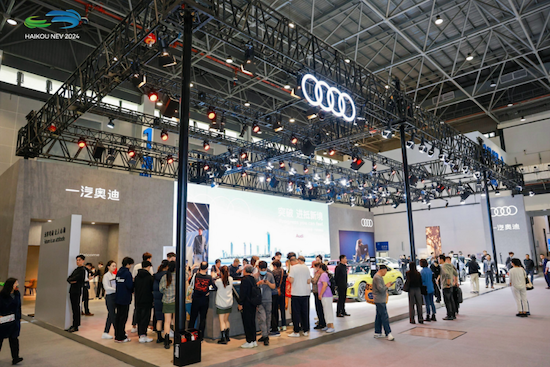
Facing the wave of electrification transformation in the automobile industry, Audi is accelerating the pace of launching PPE pure electric platform products. The new Q6 e-tron production version is scheduled to be officially released in the summer of 2024, and the A6 e-tron series models are scheduled to be officially released in the autumn of the same year. At the same time, Changchun Audi FAW new energy vehicle production base for China market is also under construction in an orderly manner, and domestic Q6 e-tron and A6 e-tron series vehicles will be put into production in 2025. As the first luxury car brand with localized production in China, FAW Audi is committed to bringing a brand-new experience beyond expectations to more users who love Audi brand by shaping the vision of high-end mobile brand in the future. (Source: 2024 (6th) Haikou International New Energy and Intelligent Networked Automobile Exhibition)



